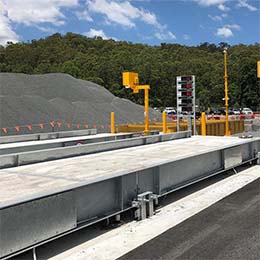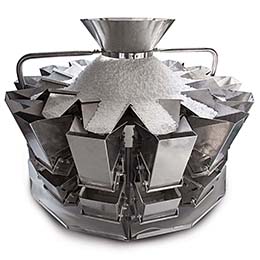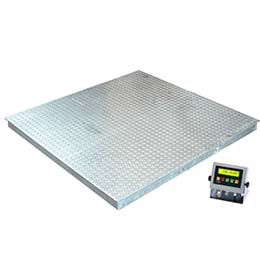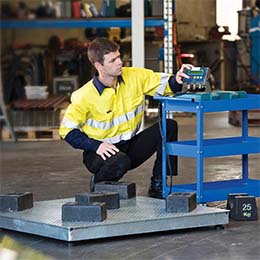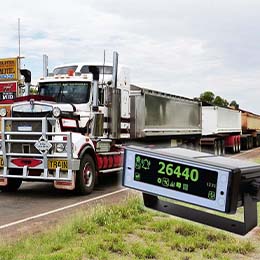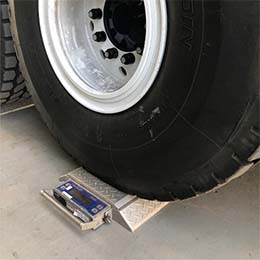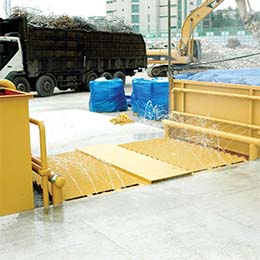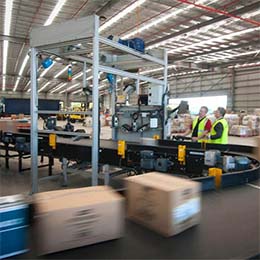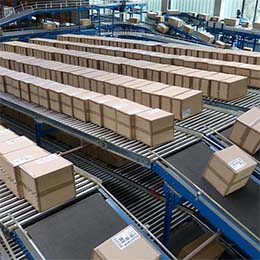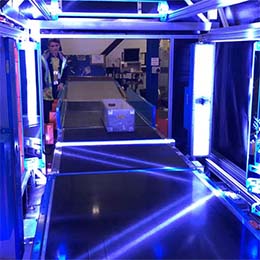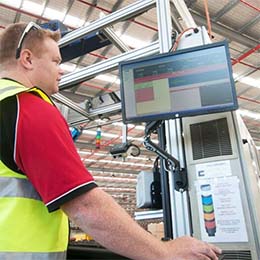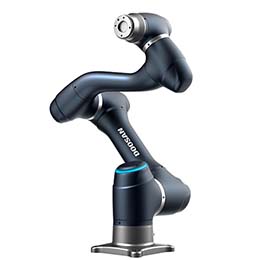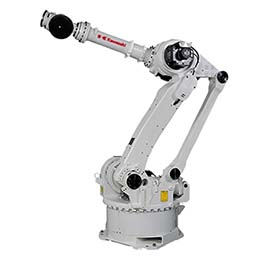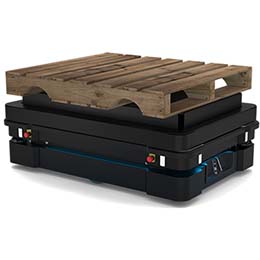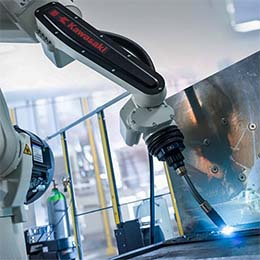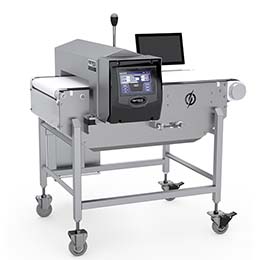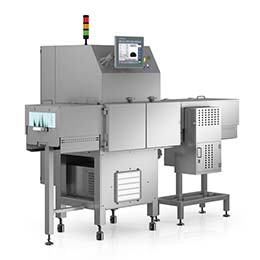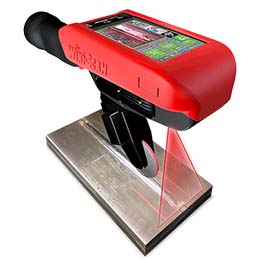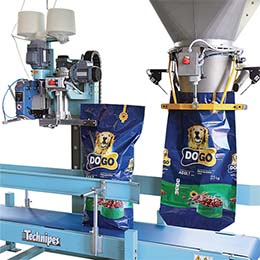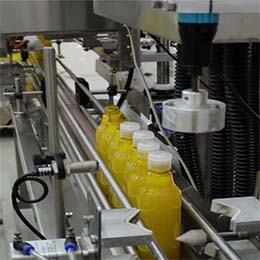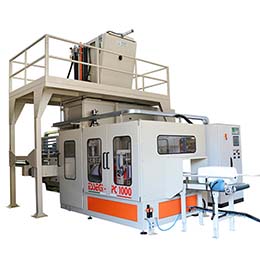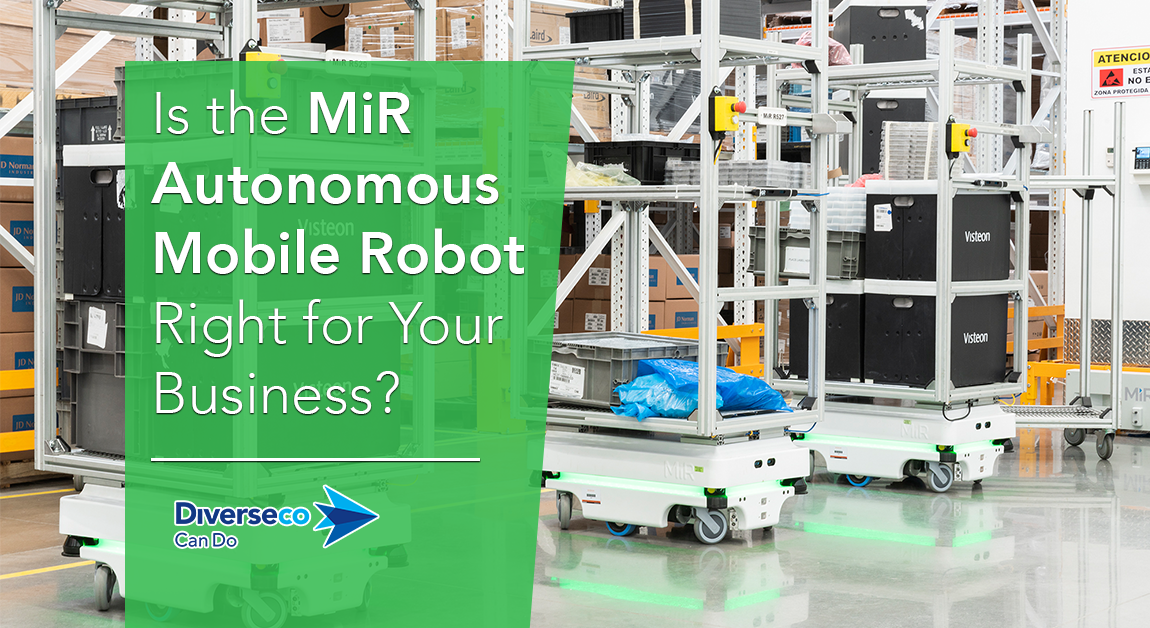By Rhett Talley Marketing & Business Development Manager – Automation
In this post I am going to review the various environmental factors, process flow conditions, and business aspirations that will help determine if the MiR autonomous mobile robot is right for your business. Let’s take a look.
What is a MiR? By now most people with an interest in industrial automation have heard of AMRs or Autonomous Mobile Robots – like those from MiR (Mobile Industrial Robots A/S), the Danish company founded in Odense, Denmark in May 2013.
The different MiR models can optimise your internal transportation (intralogistics) of sensitive, bulky, or high-value materials or heavy loads and/or pallets while also effecting end-to-end process actions (eg, think put-away, pick-up, reloading, re-stocking, re-shelving, mobile conveying, replenishing, delivering) and allow employees to focus on higher-value activities.

Left to right: MiR 1000, MiR 500, MiR 250, MiR 200, MiR 100. The numbers designate max topside payload. The MiR 250, 200, and 100 can pull carts with payloads greater than their respective topside max.
End of Arm Tooling for mobile robots. An ever-increasing array of open sourced, customised top-modules like shelves, conveyors and cobot arms are being developed and implemented continually and the limits to potential applications are merely the limits of our collective imaginations.

MiR 200 and mobile trolley with conveyor.

MiR 200 with custom quick change transport fitting
In the right application settings, the MiR can replace conveyors, forklifts (and their drivers); people carrying goods, people moving pallet jacks, or pulling trolleys; or even replace fixed movement AGVs.
With built in sensors, 3D vision cameras and software – and using a new technology called SLAM (simultaneous localisation and mapping) – the MiR compares real time data with an environmental static and dynamic map to orient itself in space and make real time decisions – like moving around a person standing in its path or moving out of the way of an approaching forklift.


SLAM enables the MiR to move through complex indoor environments like hospitals, offices, factories, and distribution centres that are rich in fixed (ie walls) and dynamic (ie people) obstacles – without using expensive and fixed guided tracks. So, the MiR is not an AGV. Once it has the map of its environment it can go from point A to point B – even through doors and lifts – fully autonomously. And a MiR like other collaborative robots can be easily and quickly redeployed via tablet and app to perform new and different tasks now and forever.

Creating a map for the MiR using a tablet and the MiR app. Sort of like bringing your new puppy home and letting her explore the house.
The various MiR cobot models can allow – perhaps for the first time ever – some types of businesses to design and implement a Utopian workplace environment that can deliver the highest levels of both automation and safety currently possible. Different industries have different needs but the MiR is able to solve a diverse range of challenges due to a broad selection of models and tools, all with built-in flexibility. “But Conditions Apply.”
So, there you go.
Yeah, but. Sure, that sounds great you say, but how do I really know if the MiR is right for my specific business? More than that, is it right for our business right now, in our current facility, with our particular goods and materials mix, and with our current semi-flexible work practices, and our particular culture, with all of our human workers and visitors still busy moving about doing their thing?
Yay or Nay? The Fundamental Considerations. Think of the following as a checklist. If you say “yes” to many of these considerations then the MiR might be right for you. Let’s review.
Openness to Innovation. Firstly, is your company and its culture open to innovation and change? Is there an imperative or a mandate to seek automation opportunities for the obvious reasons of improved optimisation and performance, improved productive capacity, improved safety and reduced workplace injury, and reduced costs or improved margins? Believe it or not, not everyone can honestly say yes to these fundamental questions.
Automation Considerations Now. Having said yes to the questions above, (congratulations), you might be on an automation quest as we speak. You know that you have a requirement to continuously or frequently move materials or goods from point A to point B in a specific production or process flow in a large indoor environment with human workers. And up to now your options are: conveyors, AGVs (ie fixed tracks), forklifts, trolley-jacks, people pushing trolleys, people carrying items and so on. But there is a more basic consideration to be made: Can this process (human-performed task) be automated? Yes or No. Should this process be automated? Yes or no?
Now or Never? By not automating a process than can and should be automated you are in effect making a decision to keep your processes as they are now potentially forever. Ask yourself, is this viable?
Project Champion? Someone in your business needs to be the lead person who champions this next level of transformative automation and takes responsibility for the outcome. Do they have the experience and the internal authority to effect the change? Is there a cap ex budget? Is there an automation mandate to see the project through?

No value add! A MiR 100 or 200 could easily tow this cart or any variation on the theme from point A to B – no driver required. We can even create an autonomous process to move the parts out of the cart and into a waiting shelf then return the MiR back to repeat the process.
Minimal Disruption Please or High Switching Cost. Further to your automation considerations now, in solving your current challenges, ideally you want as little disruption or change to the current physical environment as possible. And so intuitively, in this context, you realise that none of the traditional options from the past are very satisfying. This can often go in tandem with a high switching cost for hard automation challenges. If these apply to you, a MiR might be a great option because they are in effect environmentally non-disruptive.
A Collaborative Application? When it comes to robotics, a collaborative application in its simplest definition means “working in close and frequent proximity to people”. So, firstly does your work environment and your solution requirement represent a collaborative application in which people will still feature prominently in the workplace landscape? An obvious example is a hospital. If yes, then a MiR might a great option.

Collaborative Application – person and robot working together during unloading and replenishment
A Culture of Safety. Increasingly manufacturers and service providers across industries and regions are creating a workplace culture of “safety first”. In fact, in most industry reports at least 70% of manufacturers says collisions and other shop floor accidents were either a very challenging or challenging business issue. Often forklifts and AGVs are simply not an option – they are inherently dangerous and not collaborative. If yours is a people-rich, dynamic, collaborative environment a MiR might be your best automation option.
Physical Environment. If your work environment comprises a large indoor environment with flat level floors throughout (and some people doing things here and there) and even multiple levels connected by elevator then this is a good environment for a MiR. The suitability of your environment is enhanced by enough fixed static landmarks (ie walls, pillars) for mapping and hence navigation. The larger the area traversed such that the total per-shift travel distance in kilometres between destination points is significant, the better for a MiR application.
Combining Multiple Process Steps in One Autonomous Movement. Moving goods from point A to point B might be justification enough for some MiR users. But often a human is there at either end to do something or make something happen. Where this up-to-now human function can be automated as part of the overall MiR solution ROI advantage will accrue. In fact, it is almost assumed that additional, critical, process tasks or actions will form part of the autonomous process. Or, if these actions are not able to be fully automated then, perhaps, they can be partly automated thereby reducing human interaction as much as possible. An example is, a person removes a full multiple-level cart at receiving and attaches an empty cart in response. Remember, the MiR is “collaborative” and designed to work side by side with people.
There is a long list of application examples and available top modules – frames, shelves, lifts, anchoring devices, conveyors, stations, and more on the MiR Go web page.

Fully Autonomous. A MiR 200 has earlier picked a container of components from point A and now uses the conveyor to transfer these to an SMT machine, point B. It receives in an empty container and then returns for replenishment to point A at the other end of the facility.
Multiple Missions. Multiple Zones. Easy Redeployment. Unlike fixed track AGVs the MiR can be easily and quickly redeployed in real time by an operator using a tablet and the MiR App. This is simply impossible with a traditional AGV. Multiple maps for different floors or area locations can be used and the robot accesses the maps as needed. Using image files and videos can quicken the mapping process as well. Getting a second MiR? Copy and paste all of the mapping files into the new robot. Fast zones, slow zones, beeping zones, all of this can be easily programmed by the user.
Hygiene and Sterile Considerations? Medical or Pharma Industry? With the strict hygiene regulations of medical and pharma manufacturing, many workhours can be spent on the gowning and ungowning of protective clothing and washing up when moving in and out of designated areas. With the MiR, no gowns required, and full functionality can be enabled in a sterile environment.
Automate Disinfecting. In an extraordinary development resulting from the current Covid-19 climate, Disinfection top modules such as UV lights can now turn your MiR robot into an automatic disinfection robot to optimise your internal cleaning cycles.
Worker Salaries. Some skilled industries and companies in these industries inevitably have higher average wages than others. Highly educated and skilled people can be expensive and scarce. And yet these highly paid workers are often tasked with a low-value, non-human-centric activity like moving goods from one process or destination to another. This ought to be a red flag to employers when considering if a task can and should be automated.
Multiple Shifts? As with calculating ROI for most types of automation, where repetitive low-value tasks need to be performed across multiple shifts (delivering drugs, replenishing production components) the payback is accelerated and made more attractive. But the MiR has the big advantage of, say, an AGV in that it can be easily repurposed or redeployed to perform a completely different task at any time (with some planing beforehand).
Sensitive and/or High Value Materials. If your company engages in the internal movements of these types of goods then the added security of having a highly reliable and traceable robot transport the items can be an advantage.
ERP Integration, Industry 4.0, IIoT. You want it, you got it. MiR has an open architecture IT platform to enable easy systems integration for advanced digital or manufacturing aspirations. If your WMS or WCS has an open API then the MiR can interface with it and share data or receive and give commands and so on. If this is valuable for you be sure to discuss with your MiR vendor.
RaaS anyone? Robots as a Service is becoming a more popular commercial model as vendor capabilities expand. Many vendors now offer the opportunity to hire an AMR or fleet of AMRs similar to how you your company may lease forklifts now. Ask your vendor it this is an option that you can consider.
And Finally: “Brand Aspirations”. There is a nuanced and not explicitly ROI rationale for the MiR or any AMR for that matter which involves the higher-level aspirations of your brand to adopt best-in-class safety and automation technologies as part of a brand-enriching value story. In other words, your company’s innovation reputation. This aspiration is important to internal and external stakeholders alike. These include employees, customers, suppliers, shareholders, investors and the market in general. In other words, the aspirations that your brand has to create the most ideal work environment technology can enable right now.

